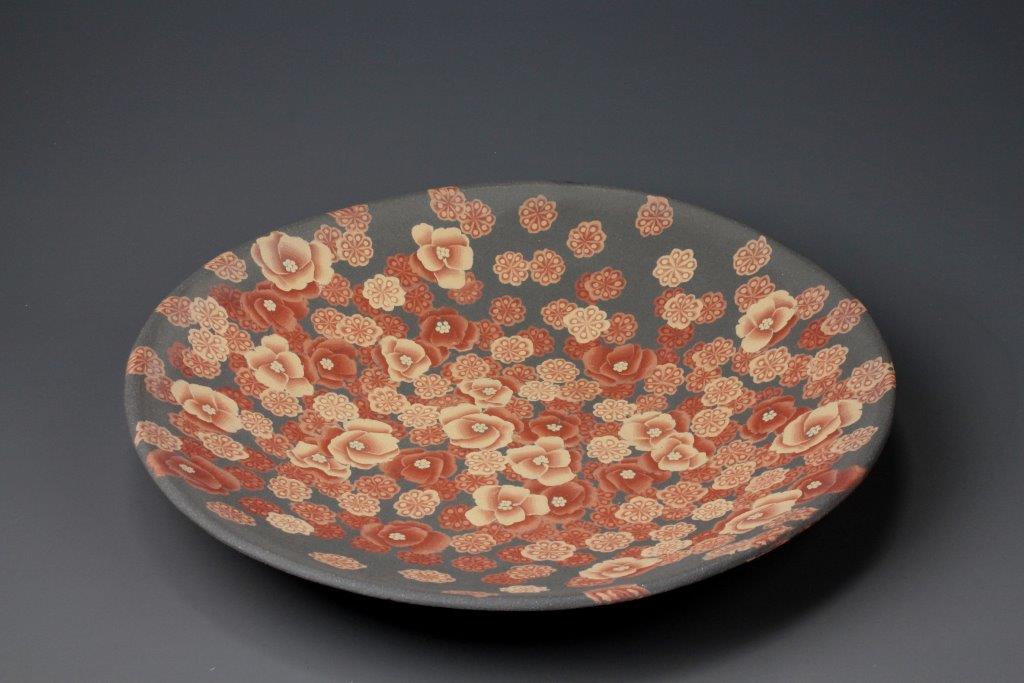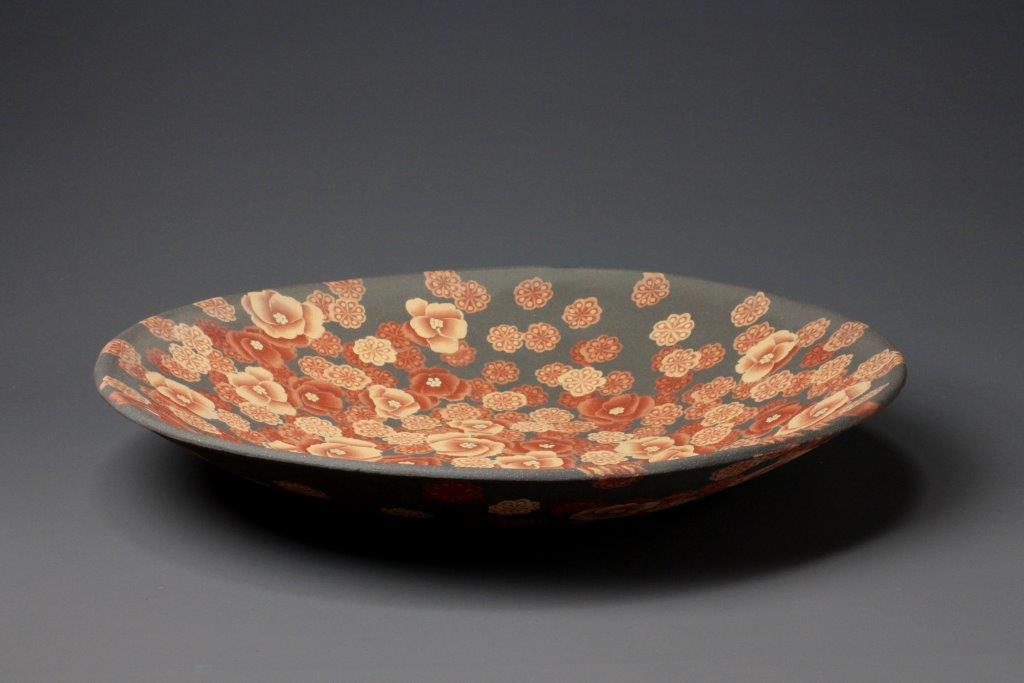Mumyoi dish with marbled flower design.
- Ceramics
- Presented in 2014
- H 7.5 x W 42.0 x D 42.0 cm
- Sold Out
Mumyoi-yaki is a style of ceramics employing unique reddish clays extracted from the gold and silver mines of Sado Island in Niigata Prefecture.
In the neriage technique, several dozen layers of different colors of clay are piled up in such a way that when the clay is cut into round slices, the cross-sections form images of flowers, a huge number of which are assembled to form a large dish. This is then fired unglazed at a high temperature. It takes approximately three months to complete one of these pieces.
| Category | Ceramics |
|---|---|
| Year Presented | 2014 |
| Dimensions | H 7.5 x W 42.0 x D 42.0 cm |
Living National Treasure Sekisui Ito

Mumyoi-yaki, the fine Japanese pottery made from reddish clay known as mumyoi. Producing the clay, the heart of Sado’s goldmine shares 200 years of history with people. Akamizu Kiln has a long tradition that was started by ITO Tomizaburo (HAGUCHIYA Jinbei) during the Tempo period. His grandson Tomitaro called himself ITO Sekisui, and Sekisui II, III and IV followed this trade. Their works received a number of awards at exhibitions at home and abroad, meanwhile the generations of the family were privileged with the honor of purchases by the Imperial family. Since ITO Yoichi succeeded to Sekisui V in 1977, he has received numerous awards at the Japan Traditional Art Crafts Exhibition, Japanese Ceramic Arts Exhibition, international exhibitions and others. In 2003 he was appointed a holder of important intangible cultural property (living national treasure).


